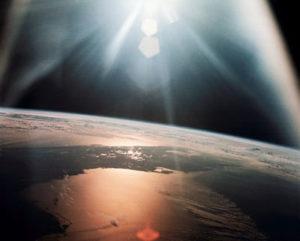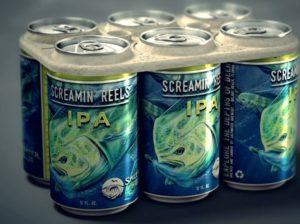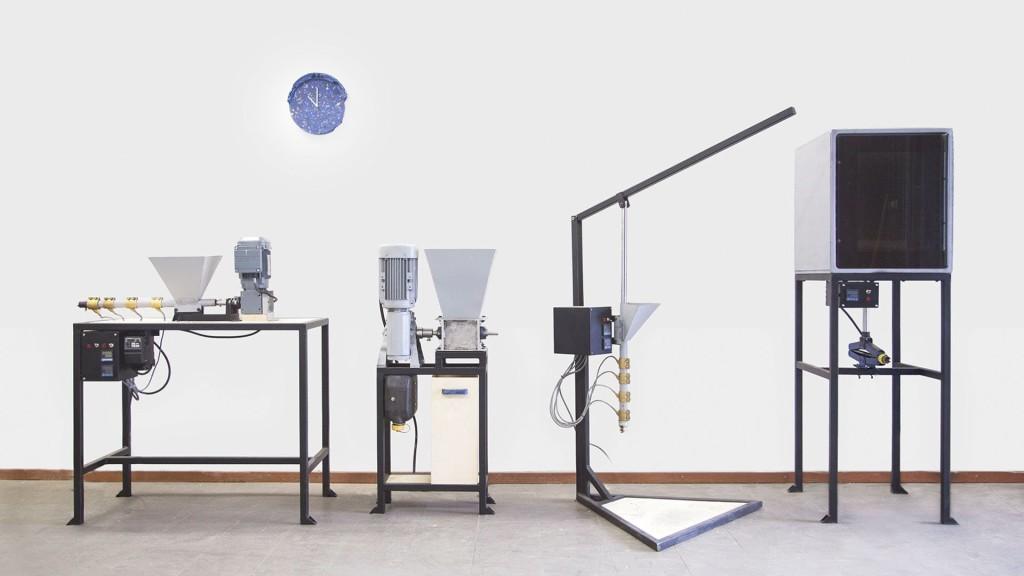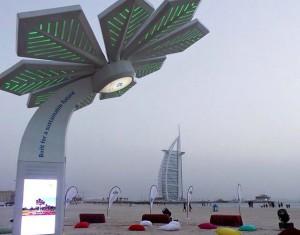 Environmental experts have made some very dire predictions about what will happen to our planet and, consequently, to us, if we don’t start making some big changes in the way we live, consume, and do business. No one can fully predict exactly what will happen over the coming years and decades, as there are a lot of variables in play, but the projected scenarios are chilling – rising sea levels swamping cities; increase in disease thanks to poor air quality and excessive heat; threats to food and water supplies, and much, much more.
Environmental experts have made some very dire predictions about what will happen to our planet and, consequently, to us, if we don’t start making some big changes in the way we live, consume, and do business. No one can fully predict exactly what will happen over the coming years and decades, as there are a lot of variables in play, but the projected scenarios are chilling – rising sea levels swamping cities; increase in disease thanks to poor air quality and excessive heat; threats to food and water supplies, and much, much more.
We’re already starting to see some of these predictions become reality. Storms are increasing in frequency and intensity, extreme droughts are contributing to wildfires and reduced water supplies, and once-common species are disappearing fast; even the growing virulence of diseases such as Zika can be linked to environmental damage. It’s scary stuff that can make you feel helpless, but the good news is that we’re finally recognizing the threat we’re facing, and coming up with creative ways to mitigate it.
The causes and effects of climate change and other environmental issues are so pervasive that they should be considered in everything we do – not to drive ourselves nuts, but to think about how we can continue to grow and develop as a productive, technological society without further destroying our planet and our health. In almost any technological development, there are environmental pros and cons, and 3D printing is no exception.
When 3D printing began to emerge into the mainstream, many people touted it as the ultimate green, zero-waste alternative to traditional manufacturing methods. It hasn’t quite lived up to those expectations – the amount of energy used by 3D printers remains a concern, as do fumes and excess plastic. However, the 3D printing industry and its consumers are a largely conscientious and responsible lot, and manufacturers and makers alike have developed ingenious solutions to not only the environmental problems posed by 3D printers, but to wider environmental issues on a global level.
While 3D printer manufacturers continue to work on ways to make their products more energy-efficient and less noxious through additions like HEPA filters, filament manufacturers, startups and individuals are throwing themselves enthusiastically at the problem of plastic consumption. The results are encouraging; look at how many brands of recycled filament and filament recyclers are reducing waste not only from 3D printing material but from other forms of plastic and non-plastic (such as food byproduct) materials.
The positive environmental impacts of 3D printing technology go far beyond just mitigating its own effects, though. You may remember the Plastic Fantastic Project, an idea that one woman came up with that resulted in the cleanup of an island, the technological education of an indigenous community, and an incentive for children to want to go to school. That’s a whole community that has been given the means and desire to learn and create from what was previously just a pile of waste.
It may sound grandiose to ask “Can 3D printing save the world?” but it’s not an unreasonable question, and it’s not just about recycling, although that’s one of the areas that has benefited most from many creative 3D printing-related solutions. Let’s take a look at a few more of the ways 3D printing technology has already contributed to sustainability in ways both large and small.
Alternative Energy
One topic we frequently cover is that of 3D printed wind turbines. The development of wind energy has been pushed along by 3D printing in several ways, many of them cost-related. 3D printing makes them less expensive to manufacture, and also to prototype, which leads to faster product development and more experimental designs that would be irrational to try with other manufacturing methods. Then there’s solar power.
I remember, years ago, hearing about solar power for the first time, and being intrigued by it, but I quickly learned that it wasn’t something I’d be seeing in my own home anytime soon. I saw pictures of solar-powered buildings with huge, clunky-looking solar panels that were expensive to produce and complicated to install. Now, solar power is the fastest-growing source of energy production, and solar panels are looking very different than they did when I was a child.
Thanks to 3D printing and nanotechnology, solar panels are getting smaller, thinner, and cheaper, making them faster to produce and easier to install. Researchers in Australia have even been working on 3D printing solar cells directly onto buildings and other surfaces. And if you’re talking about the intersection of 3D printing and alternative energy, there’s really no better example than Dubai, whose 3D Printing Strategy aims to make the city-state the global leader in 3D printing by 2030, while they simultaneously strive to become one of the ten most sustainable cities in the world by 2020. The two plans are closely intertwined as Dubai 3D prints solar panels, technology hubs and other waste-reducing, energy-saving infrastructure.
Endangered Species
A disturbing number of animals and plants that were commonplace when I was growing up are now on the Endangered Species list, and their numbers are dropping fast. I haven’t seen a monarch butterfly in years, and it breaks my heart. Beyond the emotional impact of seeing butterflies, bees, frogs and toads disappear, though, are the practical – and potentially devastating – impacts the disappearance of these species may have on the human population. No more bats? Get ready for a lot more mosquitoes and mosquito-transmitted diseases. If the honeybees go extinct, we’re in real trouble, as without bees to pollinate our crops, our food supply gets a lot more scarce.
As it turns out, though, bees love 3D printing, and 3D printing loves bees. 3D printed honeycombs have taken some of the strain off overworked bee populations, and 3D printed hives are providing them with much-needed shelter. While these may seem like small things, it’s sometimes the small things, added together, that can save a species. It’s also the small things that give me the most hope for humanity, somehow. Yes, we’ll never see significant environmental improvement – particularly regarding climate change – without government and corporations working together to implement dramatic new measures. But the ideas that individuals come up with show not just ingenuity but a great level of compassion.
For example, let’s think about those plastic rings that come on six-packs of beer and pop. Their potential for environmental damage has been decried for years, yet somehow we still use them. I was always told to cut up the rings so that they couldn’t entrap animals should they get into the ocean, but even that’s not enough – the bits of plastic are still deadly to wildlife when eaten. Some companies are trying to come up with alternatives, but most of those alternatives are still plastic.
Saltwater Brewery, however, used 3D printing to develop a new type of six-pack holder that’s safe for wildlife no matter where it ends up. Working with co-creation agency We Believers, the Florida-based brewery created an edible, biodegradable six-pack holder from wheat, barley and 3D printed molds. I’m not sure how it tastes, but it’s not designed to be eaten by humans – although it can be, and I’m sure it has been, because sometimes you get desperate for a snack after a few beers. The point, though, is that if it ends up in the ocean or elsewhere in the wild, it’ll feed the wildlife instead of killing them.
It’s a perfect example of how what seems like a small project has the potential to turn into a huge, impactful change, as We Believers’ founder and CCO Gustavo Lauria points out.
“If most craft breweries and big beer companies implement this technology, the manufacturing cost will drop and be very competitive compared with the current plastic solution, while saving hundreds of thousands of marine lives,” he said in May. “It shows that through innovation the little guys can point the finger at governments and big business to motivate change that impacts our world and the one we will leave for our children.”
 It may sound idealistic, but sometimes it is the small businesses and the individuals who, by pushing and pushing and setting example after example, finally get the broader public, as well as governments and industries, to start making changes. 3D printing has become so much a technology of the people lately, and while incredible developments in healthcare, aerospace and other major industries have come from large corporations, small startups and ordinary makers have been responsible for just as much of the impact that 3D printing has presented.
It may sound idealistic, but sometimes it is the small businesses and the individuals who, by pushing and pushing and setting example after example, finally get the broader public, as well as governments and industries, to start making changes. 3D printing has become so much a technology of the people lately, and while incredible developments in healthcare, aerospace and other major industries have come from large corporations, small startups and ordinary makers have been responsible for just as much of the impact that 3D printing has presented.
It’s a point I come back to again and again, but I consider e-NABLE to be the ultimate example of how individuals, armed with a 3D printer and a willingness to help others, can create huge global change, both individually and collectively. If a few makers can start a project that snowballs into something that provides medical devices to thousands of people around the world, then why can’t a 3D printed beehive or six-pack ring be the catalyst that ends up saving a species? Why can’t 3D printing save the world? Discuss further in the 3D Printing & the Environment forum over at 3DPB.com.
Subscribe to Our Email Newsletter
Stay up-to-date on all the latest news from the 3D printing industry and receive information and offers from third party vendors.
Print Services
Upload your 3D Models and get them printed quickly and efficiently.
You May Also Like
Making 3D Printing Personal: How Faraz Faruqi Is Rethinking Digital Design at MIT CSAIL
What if your 3D printer could think more like an intelligent assistant, able to reason through a design idea, ask questions, and deliver something that works exactly the way the...
Reinventing Reindustrialization: Why NAVWAR Project Manager Spencer Koroly Invented a Made-in-America 3D Printer
It has become virtually impossible to regularly follow additive manufacturing (AM) industry news and not stumble across the term “defense industrial base” (DIB), a concept encompassing all the many diverse...
Heating Up: 3D Systems’ Scott Green Discusses 3D Printing’s Potential in the Data Center Industry
The relentless rise of NVIDIA, the steadily increasing pledges of major private and public investments in national infrastructure projects around the world, and the general cultural obsession with AI have...
Formlabs Teams Up with DMG MORI in Japan
In late June, Nick Graham, Chief Revenue Officer at Formlabs, announced on LinkedIn that the company had partnered with DMG MORI, one of the world’s leading machine tool companies, to...




































